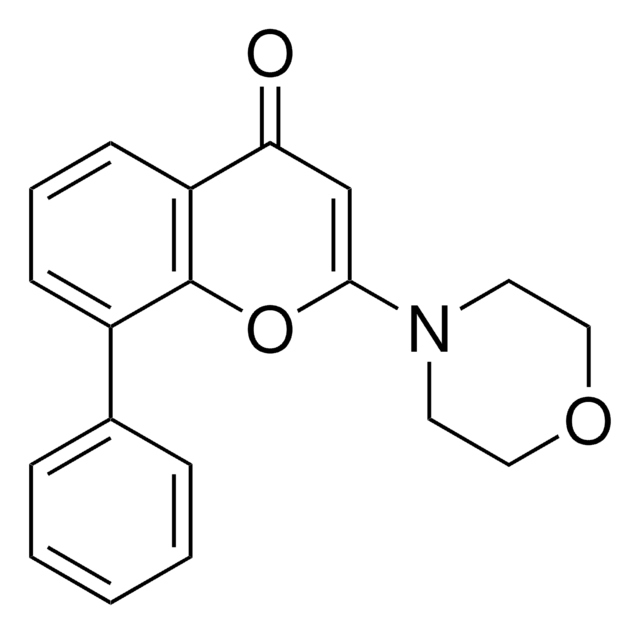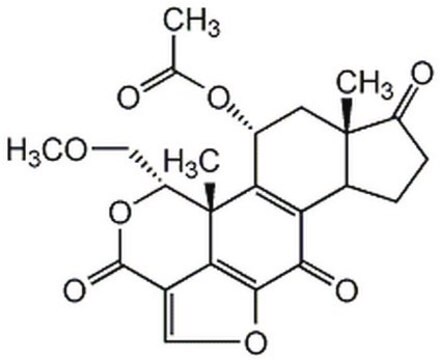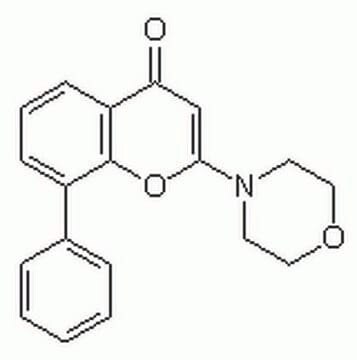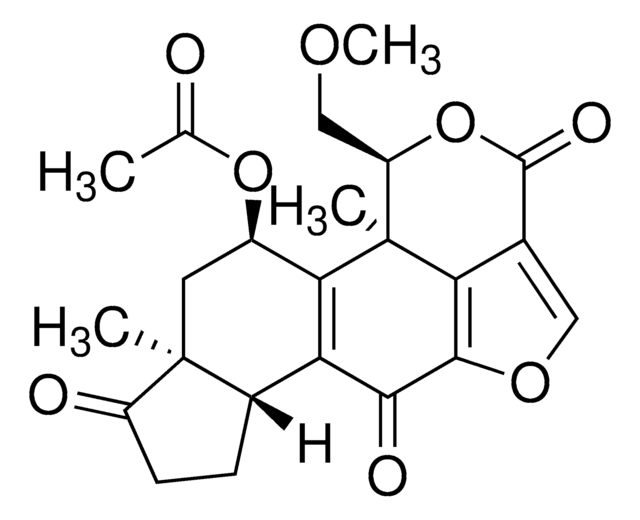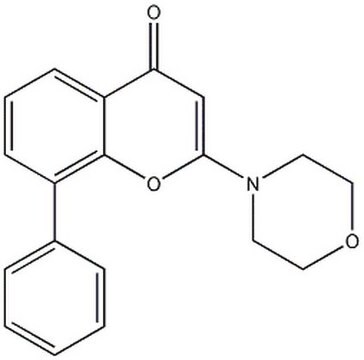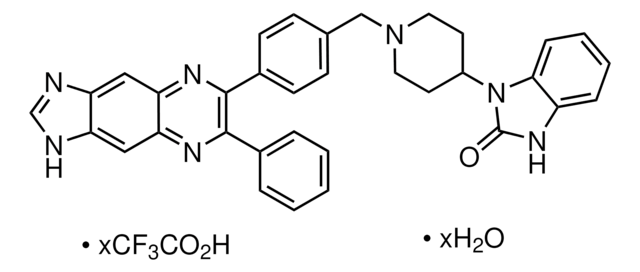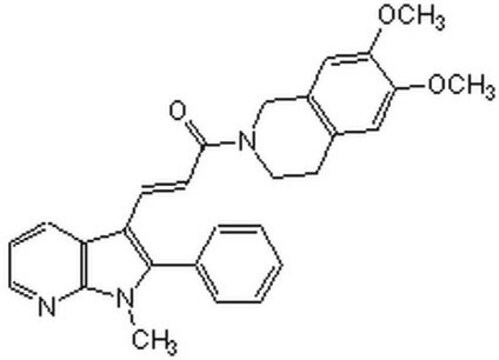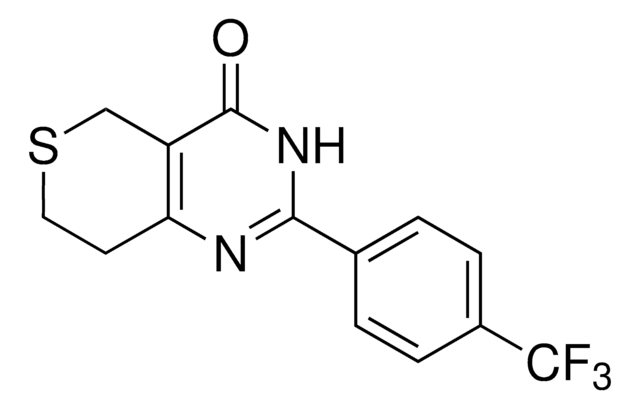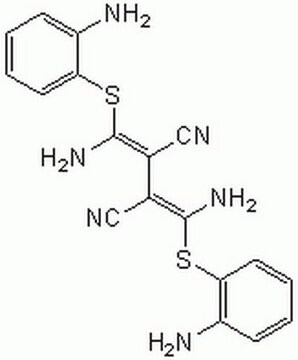440202
LY 294002
≥98% (HPLC), solid, PI3K inhibitor, Calbiochem®
Synonym(s):
LY 294002, 2-(4-Morpholinyl)-8-phenyl-4H-1-benzopyran-4-one, BRD2 Inhibitor IV, BRD3 Inhibitor III, BRD4 Inhibitor IV
About This Item
Recommended Products
product name
LY 294002, LY294002, CAS 154447-36-6, is a cell-permeable, potent, reversible, and specific inhibitor of PI 3-kinase ((IC₅₀ = 1.4 µM). Acts on the ATP-binding site.
Quality Level
Assay
≥98% (HPLC)
form
solid
manufacturer/tradename
Calbiochem®
storage condition
OK to freeze
protect from light
color
off-white
solubility
DMSO: 20 mg/mL
ethanol: soluble
shipped in
ambient
storage temp.
−20°C
InChI
1S/C19H17NO3/c21-17-13-18(20-9-11-22-12-10-20)23-19-15(7-4-8-16(17)19)14-5-2-1-3-6-14/h1-8,13H,9-12H2
InChI key
CZQHHVNHHHRRDU-UHFFFAOYSA-N
General description
Biochem/physiol Actions
Phosphatidylinositol 3-kinase
Warning
Preparation Note
Reconstitution
Other Notes
Bechard, M., and Dalton. S. 2009. Mol. Cell. Biol.29, 2092.
Lianguzova, M.S. et al. 2007. Cell Biol. Int.31, 330.
Baumann, P., and West, S.C. 1998. Proc. Natl. Acad. Sci. USA 95, 14066.
Cardone, M.H., et al. 1998. Science282, 1318.
Vlahos, C.J., et al. 1995. J. Immunol.154, 2413.
Yano, H., et al. 1995. Biochem. J.312, 145.
Vlahos, C.J., et al. 1994. J. Biol. Chem.269, 5241.
Selected Citations
Lee, J., et al. 2009. Cell Stem Cell5, 76.
Legal Information
Storage Class Code
11 - Combustible Solids
WGK
WGK 2
Flash Point(F)
487.4 °F
Flash Point(C)
253.0 °C
Certificates of Analysis (COA)
Search for Certificates of Analysis (COA) by entering the products Lot/Batch Number. Lot and Batch Numbers can be found on a product’s label following the words ‘Lot’ or ‘Batch’.
Already Own This Product?
Find documentation for the products that you have recently purchased in the Document Library.
Customers Also Viewed
Our team of scientists has experience in all areas of research including Life Science, Material Science, Chemical Synthesis, Chromatography, Analytical and many others.
Contact Technical Service
